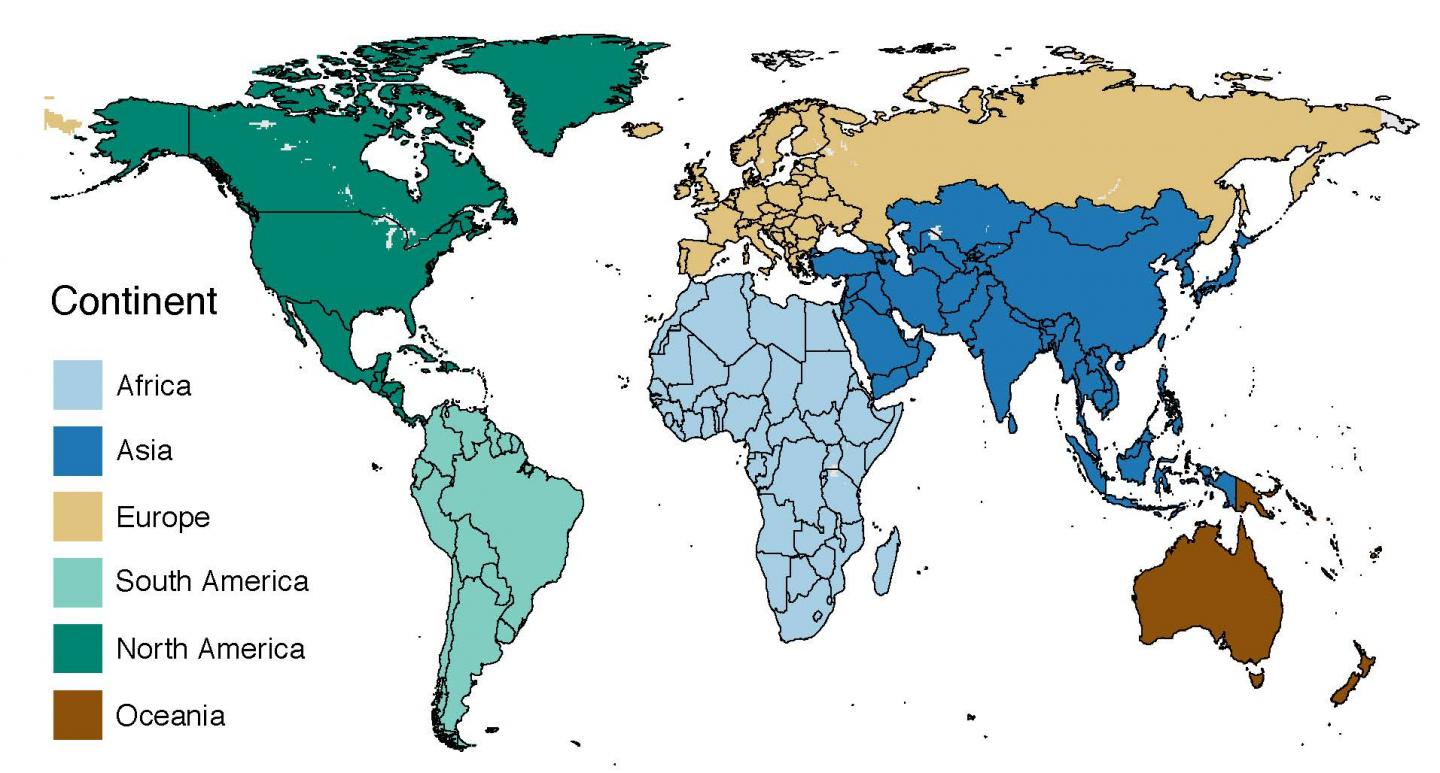Researchers quantify impact of climate extremes on staple crops maize, spring wheat, rice and soybeans

Credit: Supplied by author
Researchers from Australia, Germany and the US have quantified the effect of climate extremes, such as droughts or heatwaves, on the yield variability of staple crops around the world.
Overall, year-to-year changes in climate factors during the growing season of maize, rice, soy and spring wheat accounted for 20%-49% of yield fluctuations, according to research published in Environmental Research Letters.
Climate extremes, such as hot and cold temperature extremes, drought and heavy precipitation, by themselves accounted for 18%-43% of these interannual variations in crop yield.
To get to the bottom of the impacts of climate extremes on agricultural yields, the researchers used a global agricultural database at high spatial resolution, and near-global coverage climate and climate extremes datasets. They applied a machine-learning algorithm, Random Forests, to tease out which climate factors played the greatest role in influencing crop yields.
“Interestingly, we found that the most important climate factors for yield anomalies were related to temperature, not precipitation, as one could expect, with the average growing season temperature and temperature extremes playing a dominant role in predicting crop yields,” said lead author Dr. Elisabeth Vogel from the Centre of Excellence for Climate Extremes and Climate & Energy College at the University of Melbourne.
The research also revealed global hotspots – areas that produce a large proportion of the world’s crop production, yet are most susceptible to climate variability and extremes.
“We found that most of these hotspots – regions that are critical for overall production and at the same time strongly influenced by climate variability and climate extremes – appear to be in industrialised crop production regions, such as North America and Europe.”
For climate extremes specifically, the researchers identified North America for soy and spring wheat production, Europe for spring wheat and Asia for rice and maize production as hotspots.
But, as the researchers point out, global markets are not the only concern. Outside of these major regions, in regions where communities are highly dependent on agriculture for their livelihoods, the failure of these staple crops can be devastating.
“In our study, we found that maize yields in Africa showed one of the strongest relationships with growing season climate variability. In fact, it was the second highest explained variance for crop yields of any crop/continent combination, suggesting that it is highly dependent on climate conditions,” Dr Vogel said.
“While Africa’s share of global maize production may be small, the largest part of that production goes to human consumption – compared to just 3% in North America – making it critical for food security in the region.”
“With climate change predicted to change the variability of climate and increasing the likelihood and severity of climate extremes in most regions, our research highlights the importance of adapting food production to these changes,” Dr Vogel said.
“Increasing the resilience to climate extremes requires a concerted effort at local, regional and international levels to reduce negative impacts for farmers and communities depending on agriculture for their living.”
###
Dr Vogel would like to acknowledge her co-authors on the paper Markus Donat (Barcelona Supercomputing Centre), Lisa Alexander (UNSW, Centre of Excellence for Climate Extremes), Malte Meinshausen (University of Melbourne), Deepak Ray (University of Minnesota), David Karoly (University of Melbourne/CSIRO), Nicolai Meinshausen (ETH Zurich) and Katja Frieler (Potsdam Institute for Climate Impact Research).
Media Contact
Alvin Stone
[email protected]
Original Source
https:/
Related Journal Article
http://dx.




